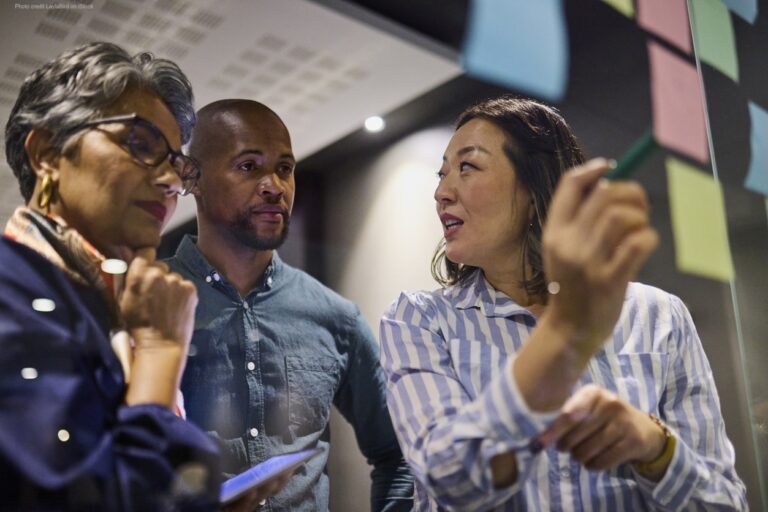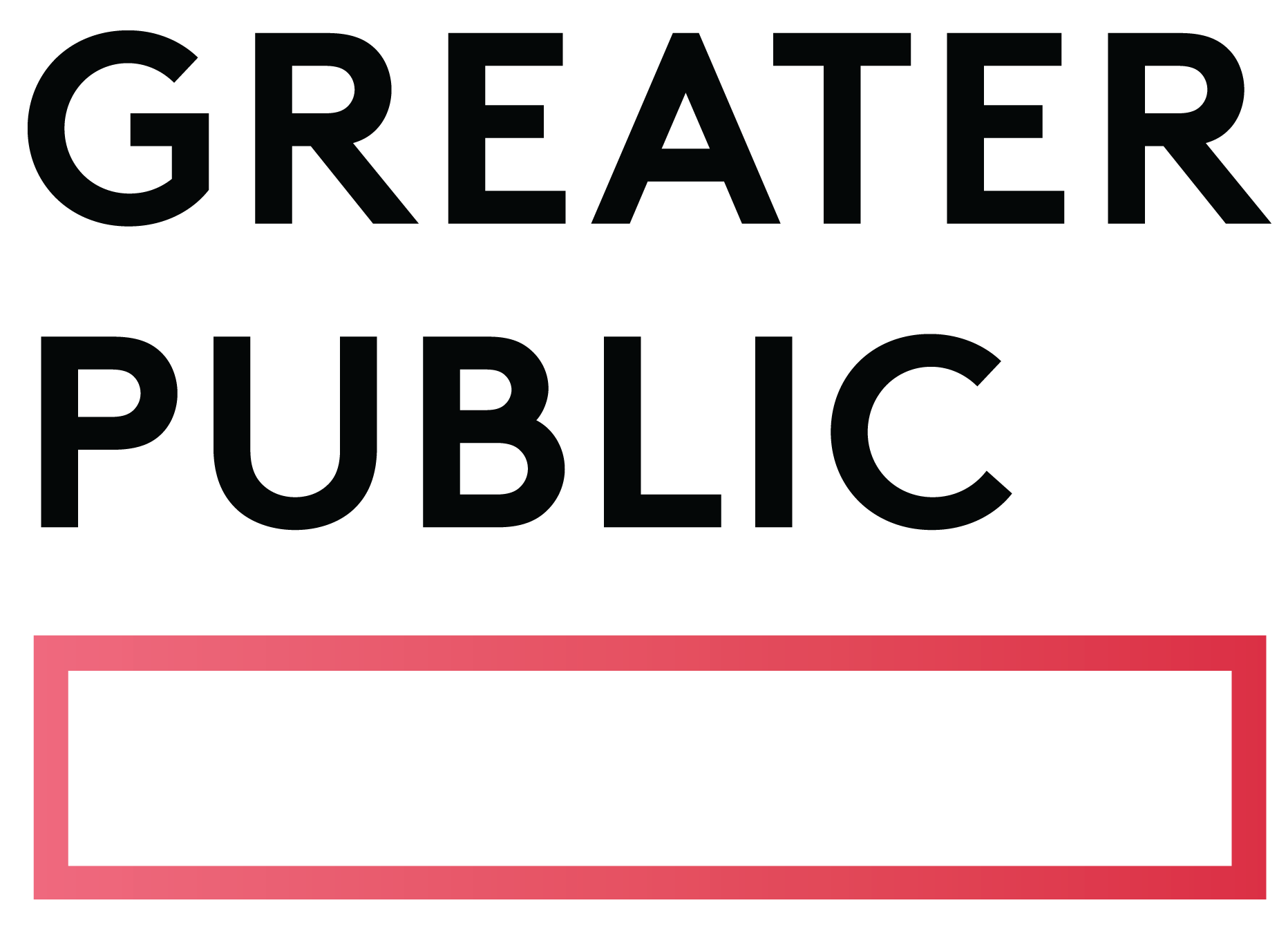Related Articles
Subscribe to the Greater Public newsletter to stay updated.
This site is protected by reCAPTCHA and the Google Privacy Policy and Terms of Service apply.

Many public media organizations face a critical inflection point: legacy systems are reaching end-of-life, donor expectations are evolving, and new digital capabilities are essential for the organization’s financial sustainability. When considering a major technology transformation, the biggest mistake organizations make isn’t choosing the wrong vendor or platform; the biggest mistake is failing to put your business goals at the center of the transformation.
WBUR’s recent Catapult Initiative offers valuable insights into the importance of business-led technology transformation. Over the past three years, WBUR has undertaken a complete overhaul of its digital infrastructure, implementing a new CRM, payment processor, donation platform, and email marketing platform. As the new systems have now successfully handled multiple pledge drives, end-of-year fundraising, and signature campaigns like their annual Valentine’s Day flower drive, WBUR has been able to reflect on what worked really well and also how they could have approached the transformation even more strategically.
When WBUR began exploring new technology platforms in 2022, the initial conversations were primarily driven by the CEO with IT and finance leadership, because these teams managed the legacy systems and saw the urgent need for transformation. While this structure is common in many organizations, WBUR’s teams now identify this approach as having a weakness to it.
Paula Witkin, Enterprise Manager on WBUR’s Business Partnerships team, reflects now that revenue teams weren’t involved enough early enough in the planning process. She points out that the digital transformation should have been “looking at the business holistically, and not from the point of view of the IT solution.” Her advice to other organizations is to approach digital transformation by first asking the tough questions of “how will this affect every part of your business.”
“In hindsight we would have done some things differently,” she says. “But it’s proof positive that we can all work together [now] and come up with something that will help us in the future.”
This perspective was echoed by Kirsten Kalkhurst, head of Business Partnerships, who emphasized that each department, in planning for a system migration, should think beyond their legacy systems. “I think that initial meeting is the most essential when you have the stakeholders from all the different groups coming together like membership and underwriting, and the business office,” explains Kirsten. “Each group needs to figure out what they want. The tendency in these situations is to resist change. We get very used to our legacy systems, and it’s hard for us to imagine what a world without that particular system might be. Number one, it’s really important that people allow themselves to blue sky and just sit there and say, ‘Wow, if I could have any data I want, this is what I would want.'”
The consequence of taking a technology-first approach became apparent after implementation, when some departments found that the new systems actually created more work without delivering equivalent benefits. Now the revenue teams are working on redesigning some of the implementations, to better align to their future strategies.
One of the sharpest recommendations came from Greg Lyons, WBUR’s Salesforce Administrator. Greg was part of WBUR’s Salesforce implementation and over his career he has helped multiple nonprofit organizations migrate between CRM platforms. Greg’s advice is to take what he calls the “magic wand” approach. Before diving into technical specifications, and before listing out all your feature requests, Greg advises organizations to gather all stakeholders together for blue-sky discussions about what they truly want to achieve.
“You really should focus on the transformative part of it,” Greg advises. “It’s not just transforming your CRM or your donation platform. It’s really thinking about ‘how do we transform our business processes.’”
He continues by explaining, “So much of internal business rules, business processes, reasons for doing specific fundraisers are tied to old technology that you’re getting rid of. This is a great opportunity to revisit a lot of those past decisions.”
This approach invites your business teams to question fundamental assumptions about how things have always been done and instead dream big, as if they are holding a magic wand. Forget about the challenges of the current systems and your desire to fix those issues. Instead describe how your work could be transformed to be more efficient and impactful without any constraints. These dreams should set the vision for the project and be goals for transforming your business processes.
Mary Hull, who leads WBUR’s Membership and Development efforts, has seen the benefits of this approach in the creation of entirely new programs that weren’t possible with legacy systems. The new infrastructure is enabling WBUR to launch a mid-level giving program, by automating communication with donors who give specific amounts, which frees staff time to focus on personalized, high-touch communication. Another program being explored is a corporate membership program, where companies can donate to the organization beyond the constraints of underwriting. These programs came about through business strategy discussion, not technology capabilities.
Perhaps the greatest challenge in a transformation project is balancing competing priorities between teams. While urgent, daily work needs to get done, teams are asked to re-imagine their business processes, and on top of that, to think strategically beyond their own group’s needs. Revenue teams should put aside their different goals and think together about a future vision and yet it is extremely challenging for teams to think as one, forward-looking team. At WBUR, this manifested in several ways:
These realities were not addressed at the beginning of the project, and in retrospect some teams express regret over that, but with limited time and resources, there were not easy opportunities.
After the platforms launched, it became easier to see how the legacy platforms had dictated how WBUR’s teams and their business processes functioned. With all departments merged into one platform, the opportunities for cross-team efficiencies were hard to ignore. WBUR made the organizational decision to merge the membership department and the major giving department (known as development at WBUR), to unify their approach to individual giving. Katie Stack, Director, Donor Relations & Operations for WBUR’s membership and development teams, observed that the new, unified individual giving department was fostering a seamless view of donor relationships, regardless of giving level.
“Before [membership and development] merged, we were kind of together, but we weren’t, and we were running in parallel,” explains Katie. “Now we’re trying to commingle together.”
The separate teams had often operated with distinct understandings of donor tools and interactions. Katie would hear from a development team member “‘Oh, Springboard… that’s just the pledge form.’” But Springboard, it turns out, can be used for a variety of financial processes for larger donors. After merging the departments, team members started to seek out new technology opportunities rather than dismissing a system as “not for them.”
Katie’s colleague Dixie Ledesma, Associate Director, Donor Strategy & Data, summarized it as, “Now we’re approaching everything not as development and membership, but as one full team. Donors move in and out: they’ll be in development, then they might move down into membership, and being aware of that movement and viewing it all as one pipeline is important.”
While WBUR hasn’t yet attributed direct revenue increases to the new systems, efficiency improvements are already evident. Julie Chao-Sibelle, Associate Director of Membership, shared a particularly compelling example from the organization’s annual Valentine’s Day flower campaign, where batch processing time dropped from 45 minutes to just 10 minutes, allowing for real-time updates without disrupting other system users.
“During a flower campaign, we’re continually sending batches of orders over to [our flower vendor] for fulfillment. That used to take 45 minutes each time we had to send a batch,” Julie explains. “We had to tell everyone to get out of the system because you couldn’t make any changes. With the [new] system, it has reduced probably down to like 10 minutes. We’re now able to not really interrupt our operations and we can just keep on going.” This makes the team more efficient and is making their flower vendor very happy.
These operational improvements are creating the foundation for future revenue growth. With staff spending less time on manual processes, they can focus more attention on strategic initiatives and donor relationships. The new systems also enable better segmentation, personalization, and tracking—capabilities that are expected to drive revenue improvements in the coming years.
Based on WBUR’s experience, here are concrete recommendations when considering your own technology transformation:
Before evaluating platforms or vendors, document exactly what your organization is trying to achieve in terms of revenue, efficiency, and business goals. Ask critical questions:
Ensure that every department that will use the new systems is leading the initial planning discussions. This includes:
Katie Stack and others at WBUR emphasized that organizations might achieve significant improvements by optimizing existing systems rather than implementing entirely new ones. You may not even need a new platform. Consider:
Not every organization needs a top-of-the-line CRM. Organizations with limited resources should:
Technology transformation is ultimately about business transformation. And centering your project, stakeholders, and implementation teams around this mindset will enable you to build a solution that transforms your organization. WBUR’s advice is to avoid at all cost replicating legacy workflows in your new platforms. The better path forward is for revenue teams to envision a future, and build for that using the technology to serve the organization.
The organizations that succeed in digital transformation are those that approach it as an opportunity to reimagine their work, not just update their tools. For public media stations navigating today’s challenging landscape, this mindset – placing business strategy at the center of technology decisions – may be the difference between investing in tools that transform your operations and those that simply add to your expense line.
Check out other posts in our series exploring lessons from WBUR’s comprehensive digital transformation:
This work has been made possible through a grant from the John S. and James L. Knight Foundation.

View these related member resources and more with a Greater Public membership:
This site is protected by reCAPTCHA and the Google Privacy Policy and Terms of Service apply.
New to Greater Public? Create an account.
